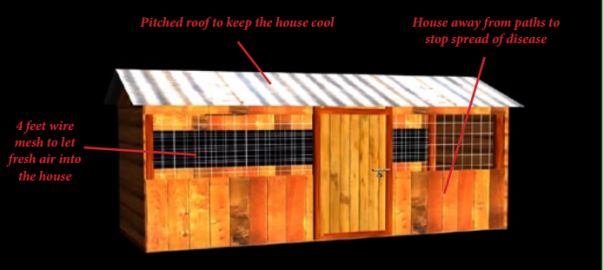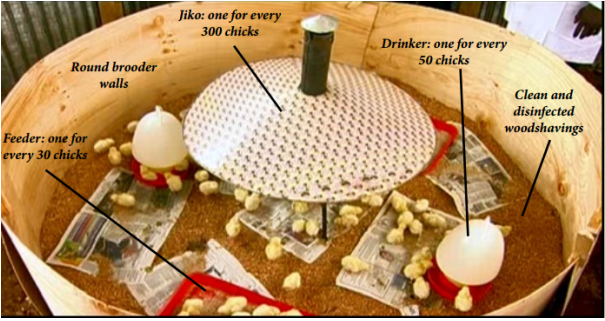Build ideal kienyeji housing
Housing plays a very important part in kienyeji chicken farming in Kenya and even in broiler and layer farming. However, since kienyeji farming is semi-intensive, there are different housing requirements that you need to look at. Here are some useful considerations that you have to keep in mind when it comes to meeting your poultry housing requirements:-
- In Kenya and much of East Africa where the weather is mostly hot, you need to have an open-sided house such as the one shown below so that you can allow natural ventilation into the house. As we have repeatedly stressed, the house should also be in an East-West orientation. This will minimize the amount of sunshine that is coming into the house and will help in keeping the house cool. Chicken do not feed well in hot conditions and a poorly ventilated house is thus likely to impact your production.

- When you are introducing new flock into the house, ensure the house is cleaned completely and disinfected in order to prevent any contact between the previous and current flock.
- Prepare your brooder a day before the arrival of the chicks. Put the heat source in the brooder at least 24 hours before you introduce new chicks in order to reduce stress on the chicks and also reduce rate of mortality.
- Upon the arrival of the chicks, remove them from the box or crates immediately. If that is not possible, ensure the chicks are placed in a place with temperatures not exceeding 20 degrees Celsius in order to prevent chick dehydration.
- After placing the chicks in the brooder, supply them with clean drinking water. Ensure the nipples as well as drinkers are working properly. The water should be cool but not colder than 17 degrees Celsius.

- Ensure there are enough drinkers in the brooder. Drinker should not be more than 1.5m from any chick. Supply at least one drinker for 80 chicks.
- Put drinkers on a larger surface in order to make it easier for the chicks to drinkers. For example, you can use a timber slab which a surface larger than the drinker. This will also prevent contamination and spillage.
- After placing the chicks, supply them with feed immediately. Feed should be spread on plastic trays which should cover at least 70% of the brooder surface area. This is the best way to give your chicks a great start.